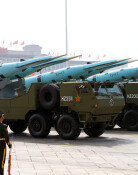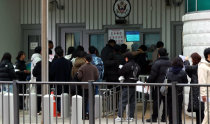Korea's population decreased by 50,000 last year
Korea's population decreased by 50,000 last year
Posted July. 28, 2023 08:12,
Updated July. 28, 2023 08:12
It was found that the total population living in Korea, including foreigners, decreased for two consecutive years for the first time since the establishment of the Korean government. Analysts say that the “low birth rate shock,” in which there are more deaths than births, has begun to have a full-fledged impact on the population size.
According to the National Statistical Office on Thursday, the total population as of November last year was 51,692,000, down 46,000 (0.1%) from a year ago. The total population, which is the sum of people living in Korea, including foreigners, has been increasing since the 1949 survey conducted after the establishment of the Korean government. Still, in 2021, it dipped from the previous year for the first time and has been declining for the second year in a row.
The biggest reason for the decline in the total population last year is the reduced number of Koreans due to the low birth rate. Last year, the number of Koreans decreased by about 150,000 to 49.94 million, falling back to the 40 million range for the first time in four years since 2018. Of these, 110,000 are natural declines caused by more deaths than births. An official from the National Statistical Office explained, “In 2021, the total population decreased as the number of foreigners decreased, and in 2022, the total population decreased as the number of Koreans decreased significantly due to natural decline.”
By age group, the youth population aged 0-14 fell 3.7% from a year ago to 5.86 million, declining below the 6 million mark for the first time since statistics were compiled. The number of people between 15 and 64 who can engage in economic activities (36.68 million) also continued to decline. On the other hand, the number of people aged 65 and over increased by 5.1% from a year ago to 9.14 million. As the pace of population aging accelerates, 100 people in the 15-64 age group have to support 24.9 elderly people, an increase compared to the previous year.
1am@donga.com



![화장실 갇혔을 때 생존법…“최후에는 변기뚜껑” [알쓸톡]](https://dimg.donga.com/c/138/175/90/1/wps/NEWS/IMAGE/2025/12/26/133042007.3.png)


![보일러 풀가동해도 춥다?…난방비 폭탄 범인은 ‘이것’ [알쓸톡]](https://dimg.donga.com/c/138/175/90/1/wps/NEWS/IMAGE/2025/12/24/133029046.3.png)
